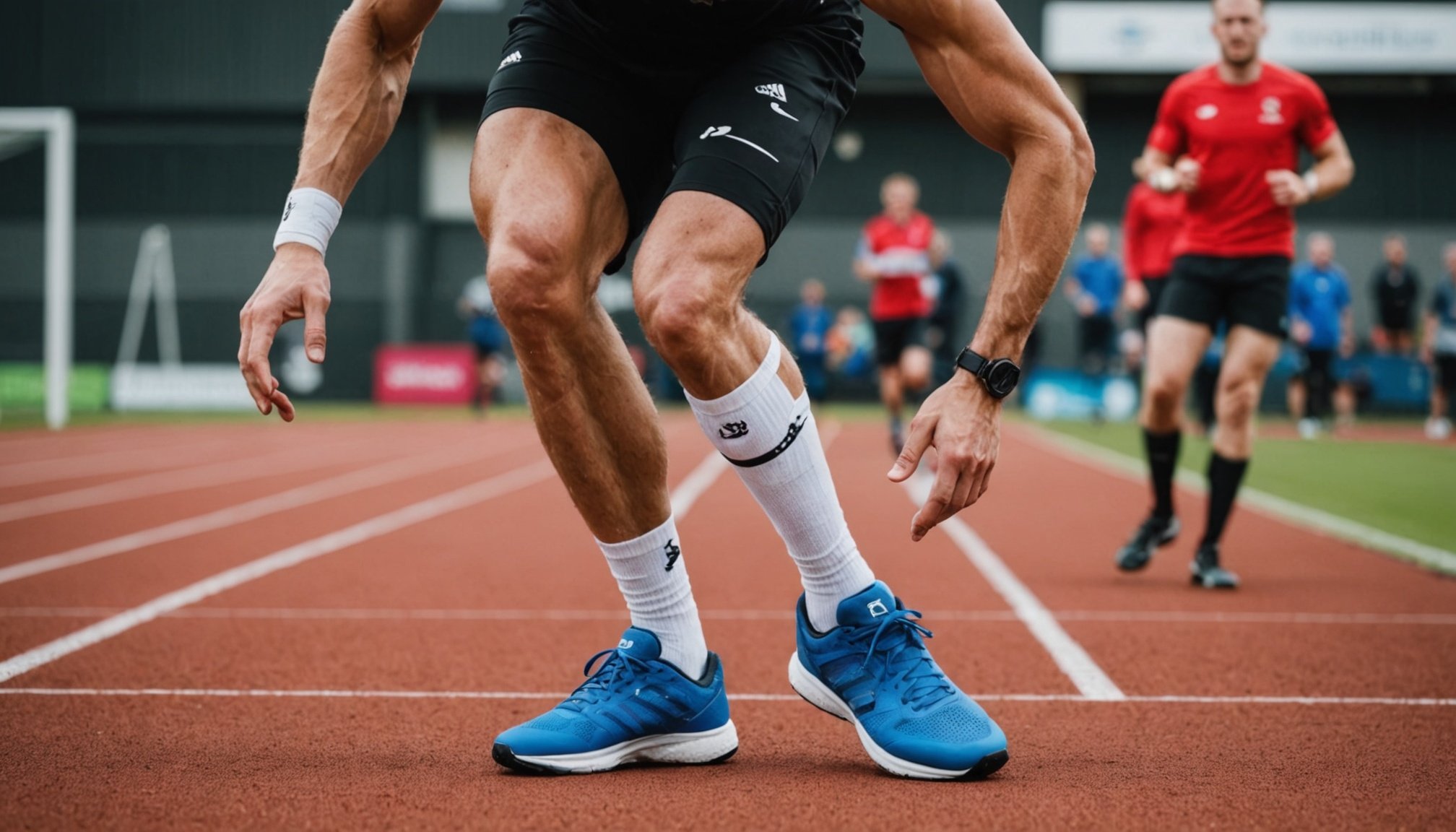Recent Advances in Injury Prevention for Athletes
Injury prevention has made considerable strides, with researchers focusing on sports health and athlete safety to keep athletes at peak performance levels. Recent developments in the field emphasize evidence-based strategies and innovative technologies designed to minimize injury risk across various sports disciplines.
The latest research underscores the importance of injury prevention programs tailored to specific sports. In the UK, studies have examined sports like football, rugby, and cricket, illustrating how targeted prevention protocols significantly reduce common injuries such as concussions, sprains, and fractures. For instance, specialized training regimens focusing on strength and flexibility are proving effective at decreasing injury incidence in football and rugby players.
Also read : Discover the Cutting-Edge Innovations Revolutionizing Protective Gear for Rugby Players in the UK
Technology plays a pivotal role in evolving sports health. Biomechanical analysis tools, wearable tech like smart insoles and clothing, and advanced imaging techniques are helping experts analyse movement patterns and detect potential injury risks early. These technologies not only enhance athlete safety but also provide coaches and medical teams with data-driven insights for crafting tailored preventive strategies.
Overall, the combination of scientific research and cutting-edge technology forms a robust framework for projecting future advances in injury prevention. As these innovations continue to evolve, they bolster the commitment to safeguarding athletes and fostering safer sporting environments.
Additional reading : Exploring the Cutting-Edge Innovations in Strength Training for UK Weightlifters
Expert Opinions on Injury Prevention Strategies
Exploring expert insights into effective athlete training and injury prevention strategies reveals fascinating perspectives on maintaining peak performance while minimising risks. Insights gathered from leading professionals shine a light on the nuanced approaches to injury prevention.
Interviews with Leading Sports Medicine Experts
Interviews with top sports medicine experts provide a treasure trove of knowledge. They emphasize an integrative approach, blending advanced medical techniques with comprehensive training regimes. According to experts, regular assessments and personalised training plans are vital to identifying potential vulnerabilities early on.
Recommendations from Physiotherapists and Coaches
Strategies shared by physiotherapists and coaches underscore the importance of tailored prevention strategies. They advocate for incorporating dynamic warm-ups and cool-down routines to prepare the body adequately. Furthermore, they recommend periodic recovery sessions to boost resilience against injuries.
Perspectives from Professional Athletes
Professional athletes offer firsthand perspectives enriched by personal experiences. Many athletes underscore the efficacy of listening to their bodies and implementing preventive measures. Those who have successfully navigated injury-prone careers highlight the pivotal role of adopting comprehensive athlete training strategies rooted in scientific and experiential knowledge.
In sum, these expert opinions collectively champion a proactive approach, advocating for strategies that are as varied as they are effective. Understanding and applying these insights can empower athletes to prevent injuries smartly and effectively.
Practical Tips for Athletes and Coaches
Athletes and coaches constantly seek actionable strategies to enhance performance. Implementing proper training techniques is essential in achieving optimal results while reducing injury risks. A well-structured warm-up session plays a pivotal role; it should involve dynamic stretches to get the muscles moving and improve flexibility. For example, activities such as leg swings and arm circles can effectively prepare your body for intense workouts.
Equally crucial is a proper cool-down routine. It aids in gradually bringing back the heart rate to a resting state and can alleviate muscle soreness. It’s beneficial to incorporate techniques like gentle stretching or walking to ensure muscles recover adequately post-exercise.
Focusing on cross-training is another effective method to enhance athletic performance. By engaging in activities outside the main sport, athletes can improve their overall fitness without over-stressing specific muscle groups. For instance, a basketball player might swim or cycle, providing cardiovascular benefits while creating a balanced workout regime.
Incorporating specific conditioning exercises into a training program is of immense importance. These exercises should focus on enhancing strength, endurance, and agility while ensuring the implementation of proper techniques and form in every session. Prioritising these aspects will not only optimise athletic performance but also contribute to a sustainable and injury-free career for athletes.
Impact of Sports Organizations on Injury Prevention
The importance of sports organizations in establishing effective safety protocols cannot be overstated. These bodies play a crucial role by implementing health initiatives that prioritize athlete welfare and minimize injury risks.
Role of UK Sports Organizations in Promoting Safety
UK sports organizations have taken proactive steps to promote safety among athletes. Through comprehensive training sessions and educational resources, they ensure participants understand the significance of injury prevention. These organizations uphold stringent safety protocols, which are regularly updated to meet current standards, thereby fostering a culture prioritizing athlete well-being.
Key Health Initiatives and Programs
Among the many health initiatives, sports organizations facilitate programs aimed directly at injury awareness and prevention. Examples include workout regimens that emphasize proper techniques and seminars addressing the prevention of common sports-related injuries. By initiating such programs, organizations not only educate but also empower athletes to take ownership of their health and safety.
Collaboration with Research Institutions
Collaboration with research institutions forms a cornerstone of effective injury prevention. These partnerships enable the sharing of best practices and the latest research findings, allowing sports organizations to refine their safety protocols further. This collaborative approach ensures that the information distributed to athletes is both cutting-edge and evidence-based, ultimately enhancing injury prevention strategies.
Future Trends in Injury Prevention for Athletes
Understanding future trends in athlete injury prevention is crucial for coaches, trainers, and the athletes themselves. One notable development is the use of predictive analytics. By analyzing historical data and current performance metrics, predictive models can identify potential risks and suggest targeted interventions. This not only enhances athlete safety but also optimizes performance by preemptively addressing weaknesses.
Additionally, technological advancements in wearable technology are revolutionizing how athletes monitor their health. These devices provide real-time data on physiological metrics, allowing for continuous assessment. For instance, smart textiles may soon become mainstream, integrating sensors directly into athletic wear to track metrics like heart rate and muscle activity seamlessly.
The future also holds promise in emerging research areas focused on sports injury prevention. Innovations in biomechanics and neurofeedback are paving the way for more advanced injury assessment techniques. Studies aim to understand the microchallenges within an athlete’s body mechanics and neurological responses, ultimately leading to personalized training programs.
These deeper insights into athlete health and performance mark a proactive shift in sports science. The amalgamation of technology, data analysis, and scientific research heralds a future where injuries are not only treated but, increasingly, predicted and prevented.











